Your house is full of concrete and devices that are quite boring. Therefore, you can take some suitable plants and flowers into your home, they will surely bring joy and cheerfulness into your house with their colorful shades and spectacular foliage. Your guests will be impressed and promise a pleasant conversation.
Although many flowering houseplants require full sun, there are still remain some kinds that are easy to grow in low light conditions. These kinds even thrive well and bloom in different colors and shapes.
These are our top 15 low-light indoor flowering plants, along with maintenance instructions, so you can enjoy dressing up your house with a fresh appearance with lovely blossoms.
#1. Orchids
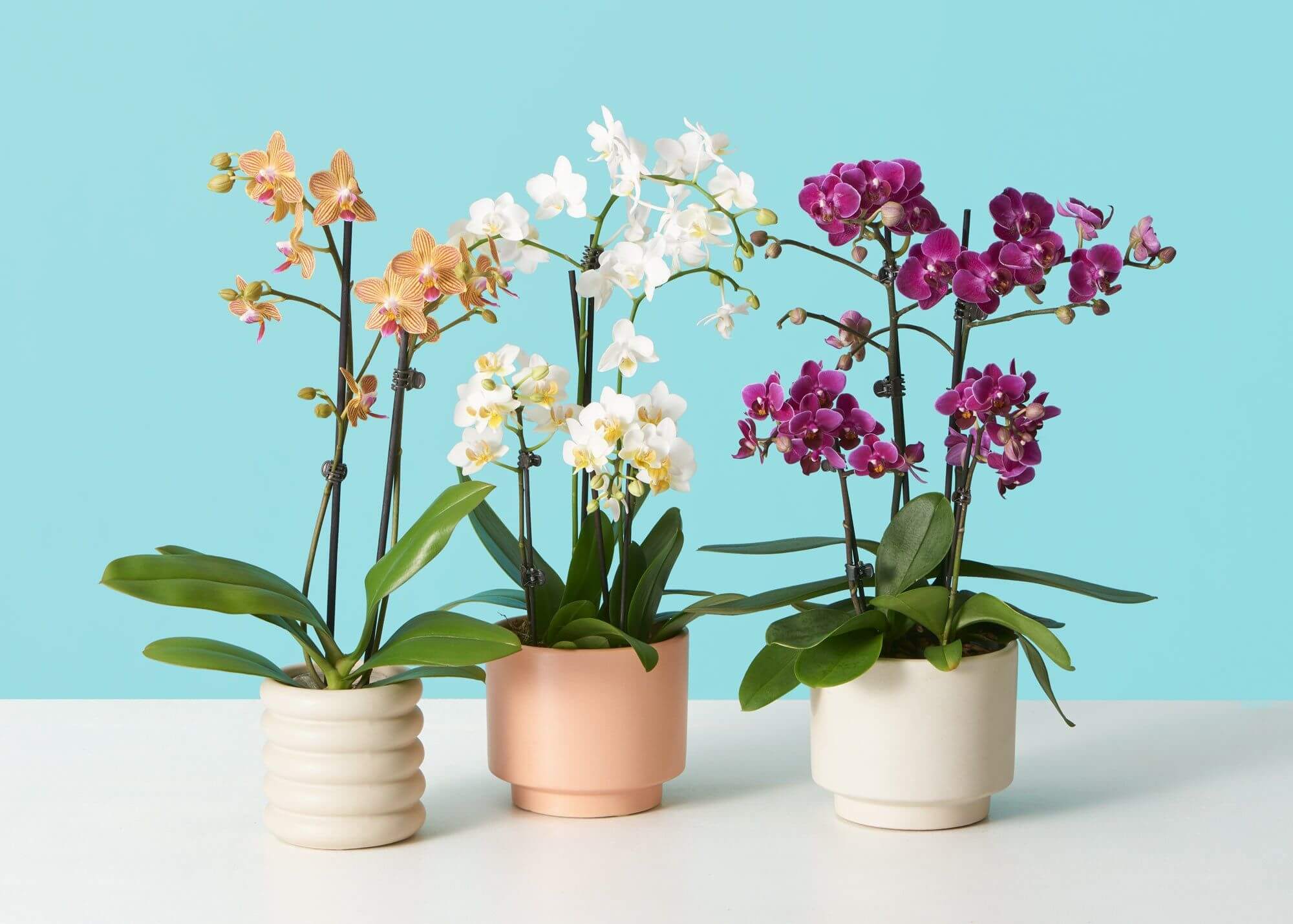 Source: The Sill
Source: The Sill
How To Grow:
- Phalaenopsis orchids, grow in transparent containers and pots to let their green roots photosynthesize.
- Dendrobium and Cymbidium orchids don’t have photosynthetic roots, so you can put them in opaque containers.
- Vanda orchids don’t need any pot at all and can be grown in empty vases or hung by wires. Compost is also essential, so use specialized orchid compost and don’t over-pot them.
How To Care:
- Most orchids need bright but indirect light, so putting them on an east or west-facing windowsill is ideal.
- Humidity in the atmosphere helps them to grow healthily.
- Mist the foliage every two to three days using tepid water (avoid spraying the flowers).
#2. Flaming Katy
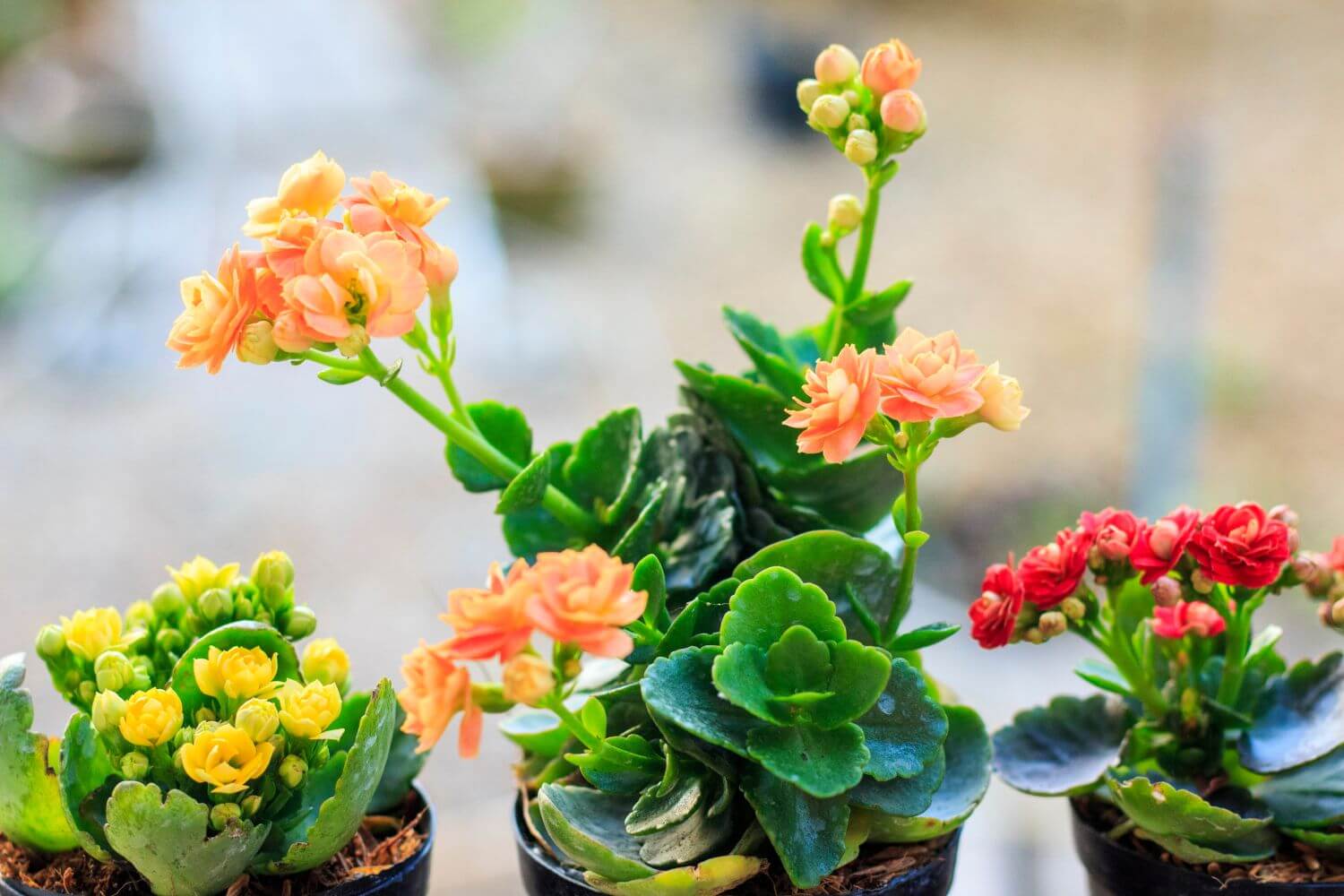 Source: Plantura
Source: Plantura
How To Grow:
- Just barely moisten the soil mixture moderately
- Be careful not to overwater Kalanchoe as this may result in wilted leaves and perhaps root rot
- Employ a container with drainage holes, and water well before letting the top 1 inch (2.5 cm) of soil dries up
How To Care:
- DO NOT overwater it or else its leave wilt. If you’ve been watering regularly and the leaves are soft and limp, the plant is likely suffering from root rot
- Water thoroughly to ensure all roots are moistened, then empty the drainage tray to make sure there are no yellow, wrinkled leaves
- Long, sunny days followed by shorter daylight hours are needed to set flower buds
- Deadheading during the flowering season for more upcoming flowers. Cut off flower stems after the blooms have faded to encourage more blooms.
#3. Guzmania Bromeliads
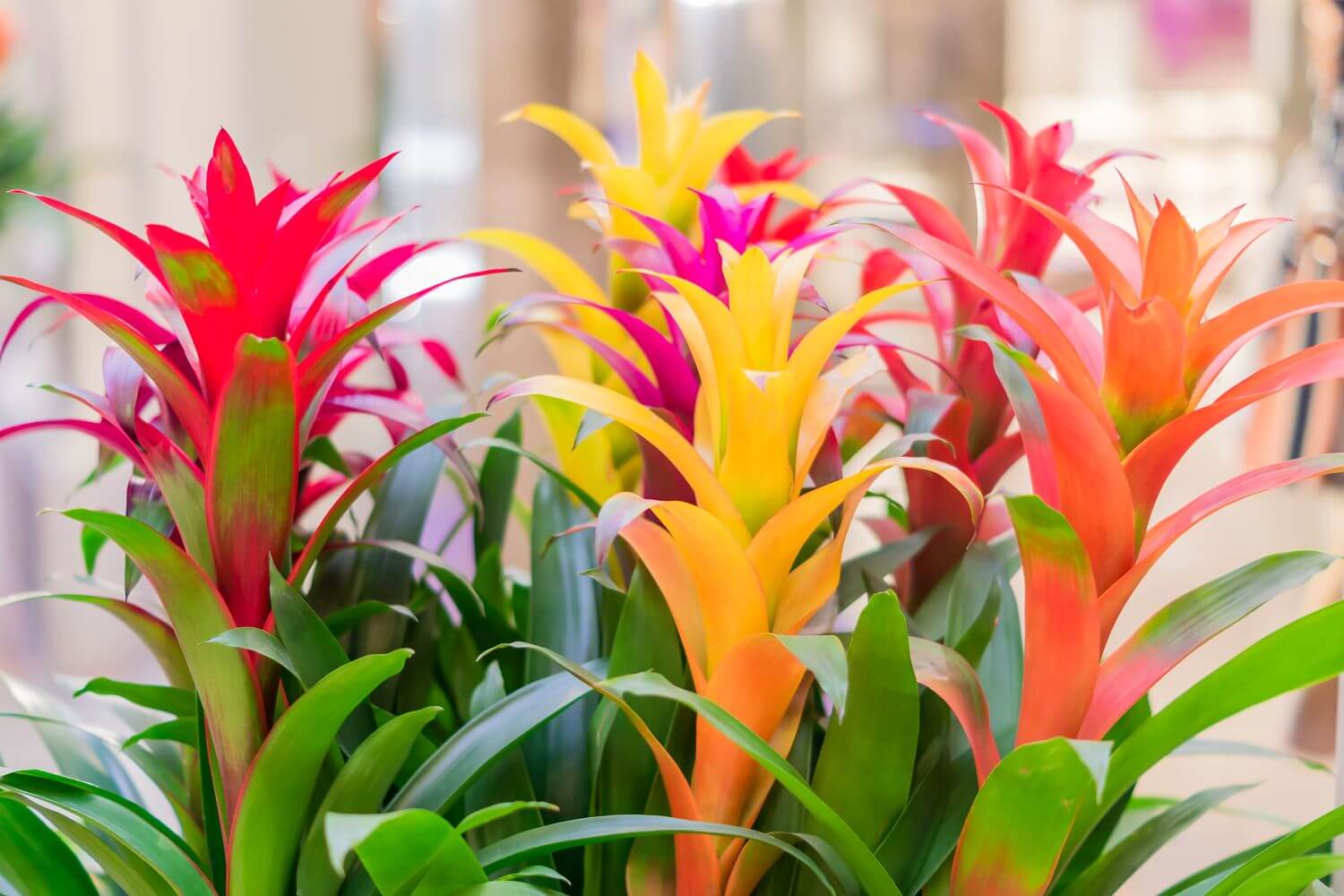 Source: Plantura
Source: Plantura
How To Grow:
- Being well-known as a prized houseplant in areas outside of their native region, grow them in a container near the windowsill
- Choose heavy and sturdy pots such as ceramic or terra cotta pots, as they will reach top-heavy growth
- Put some small, decorative stones or pieces of pottery
How To Care:
- They love bright but indirect light but their low-light tolerance is out of other Bromeliads
- Place distilled or filtered water in the central cup of the plant and replace it frequently to keep it from rotting. Keep the potting mix moist during the spring and summer months
- Because these are tropical plants, they benefit from moderate-to-high humidity. A light mist daily will keep your Guzmania looking its best.
#4. Peace Lily
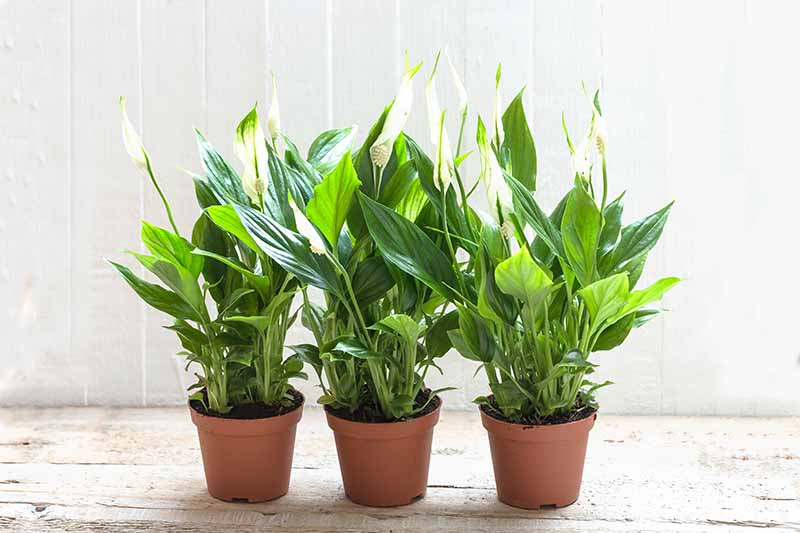 Source: Gardener’s Path
Source: Gardener’s Path
How To Grow:
- Use a container with adequate drainage and no bigger than one-third the size of the peace lily’s root ball
- Plants should be in indirect, bright light
- Always keep the soil wet, but not waterlogged
How To Care:
- Low light conditions cause these plants to blossom seldom. So go ahead and plant your peace lily in a hidden spot if you’re wanting foliage
- If you want flowers, though, plant them where they will receive strong, indirect light
- Because peace lilies are tropical plants, they are susceptible to cold weather
- Repot when the plant’s roots have entirely outgrown its container.
#5. Purple Shamrocks
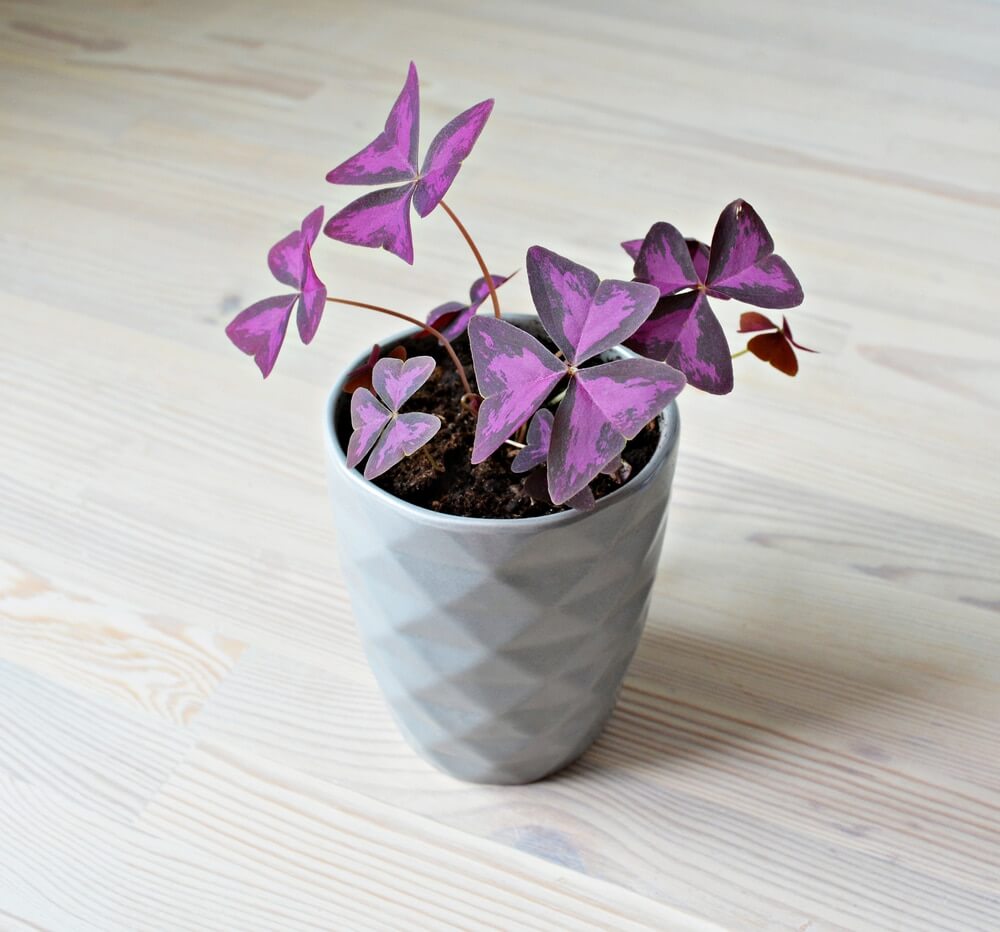 Source: Just Houseplants
Source: Just Houseplants
How To Grow:
- Grow them in containers then provide them with a sunny spot
- A loamy or sandy soil is best, or they can grow in a variety of soil types as long as it has good drainage
- Water them whenever they start to dry out
- Feed them throughout their growing season (during the fall to spring) to encourage better growth
- They go dormant in the summer. During this time, the foliage will degrade, so reduce watering and stop feeding your plant
How To Care:
- Rotate the container frequently to ensure the plant’s whole surface is exposed to light and developing equally. The plant may grow weak and leggy if it receives insufficient light
- Water it anytime the top inch of soil becomes dry throughout the growing season. To keep the soil from entirely drying up when the plant is dormant in the summer, softly water it every two to three weeks
- For indoor plants, liquid fertilizer is best. Healthy development can also be aided by adding compost to the soil.
#6. Cyclamen
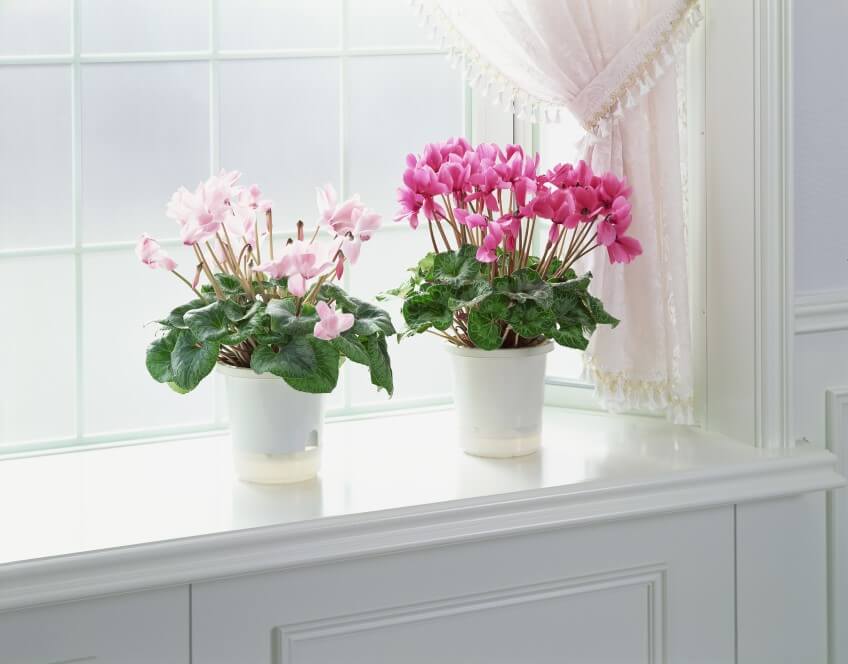 Source: The Garden Clinic
Source: The Garden Clinic
How To Grow:
- It’s worth putting it into a loam-based compost with extra horticultural grit if you want to keep it growing year after year.
- Ensure that the new container includes drainage holes and that the top of the corm is just visible above the soil. Be careful not to disrupt the roots overly.
- It needs a calm, sunny place to flourish. Avoid direct sunlight.
- Don’t overwater the soil, keep it moist. Plus, you must let your plant go dormant throughout the summer and use less water if you want it to bloom again in the fall.
How To Care:
- Florist’s cyclamen die back naturally in spring, as they’re dormant in the summer. Based on its natural cycle, reduce watering in summer for its dormancy
- Water once the soil begins to dry out. Rather than watering with a watering can, you should stand the plant in a saucer or shallow bowl of water for an hour or so until the compost is moist but not soaking wet. Let any excess water drain away.
- Cyclamen don’t need much feeding. Otherwise, they will produce lots of foliage rather than flowers. Feed every couple of months with a house plant fertilizer if you’re planning on keeping your plant from year to year.
- Remove any dead or dying flowers and leaves by tugging them away gently.
#7. Kaffir Lily
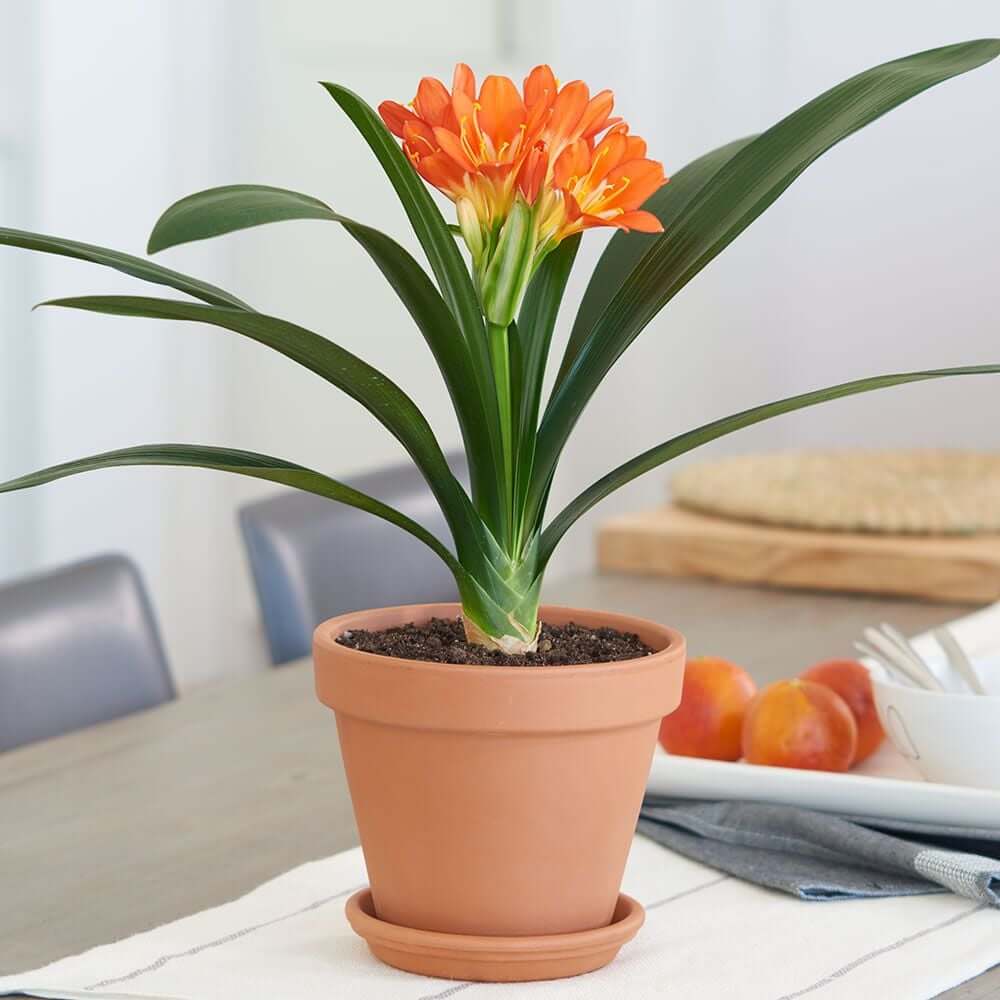 Source: White Flower Farm
Source: White Flower Farm
How To Grow:
- During the growing season, keep the soil slightly moist. Watering them once a week will be enough. Reduce the amount of water in winter to promote flowering.
- They need bright, indirect sunlight. It will also feel fine in partial shade
- Plant in good organic soil that drains well
How To Care:
- The plants need feeding twice a month during spring and summer. Stop fertilizing in the fall and winter. Remember to dilute the fertilizer to avoid the root burn
- Only re-pot when the blossoms are so huge because this plant enjoys pot bound
- Avoid stuffy rooms with high temperatures.
#8. Amaryllis
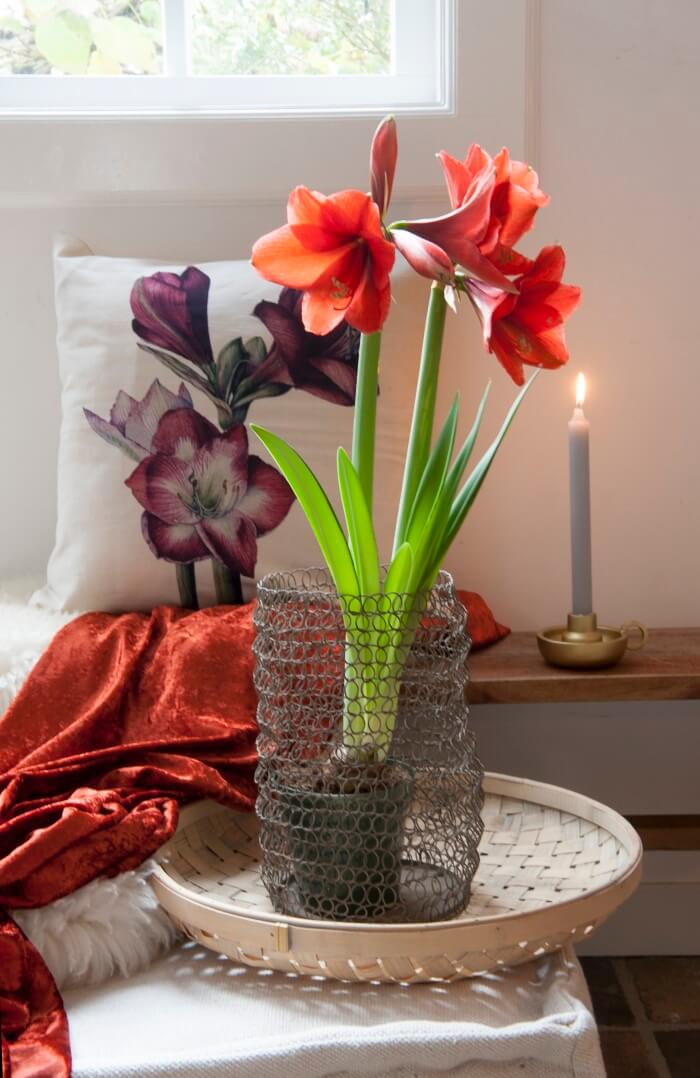 Source: Garden Therapy
Source: Garden Therapy
How To Grow:
- Plant each amaryllis bulb in a 6-8″ pot. Heavy pots are preferable because lightweight pots may tip over under the weight of the bloom.
- Place the pot in a location that receives bright, indirect light
- Use soil that drains well
How To Care:
- To prolong the blooms, keep the pot out of direct sunlight.
- As the plant grows, turn the pot periodically to encourage the flower stalks to grow straight
#9. Flamingo Flower
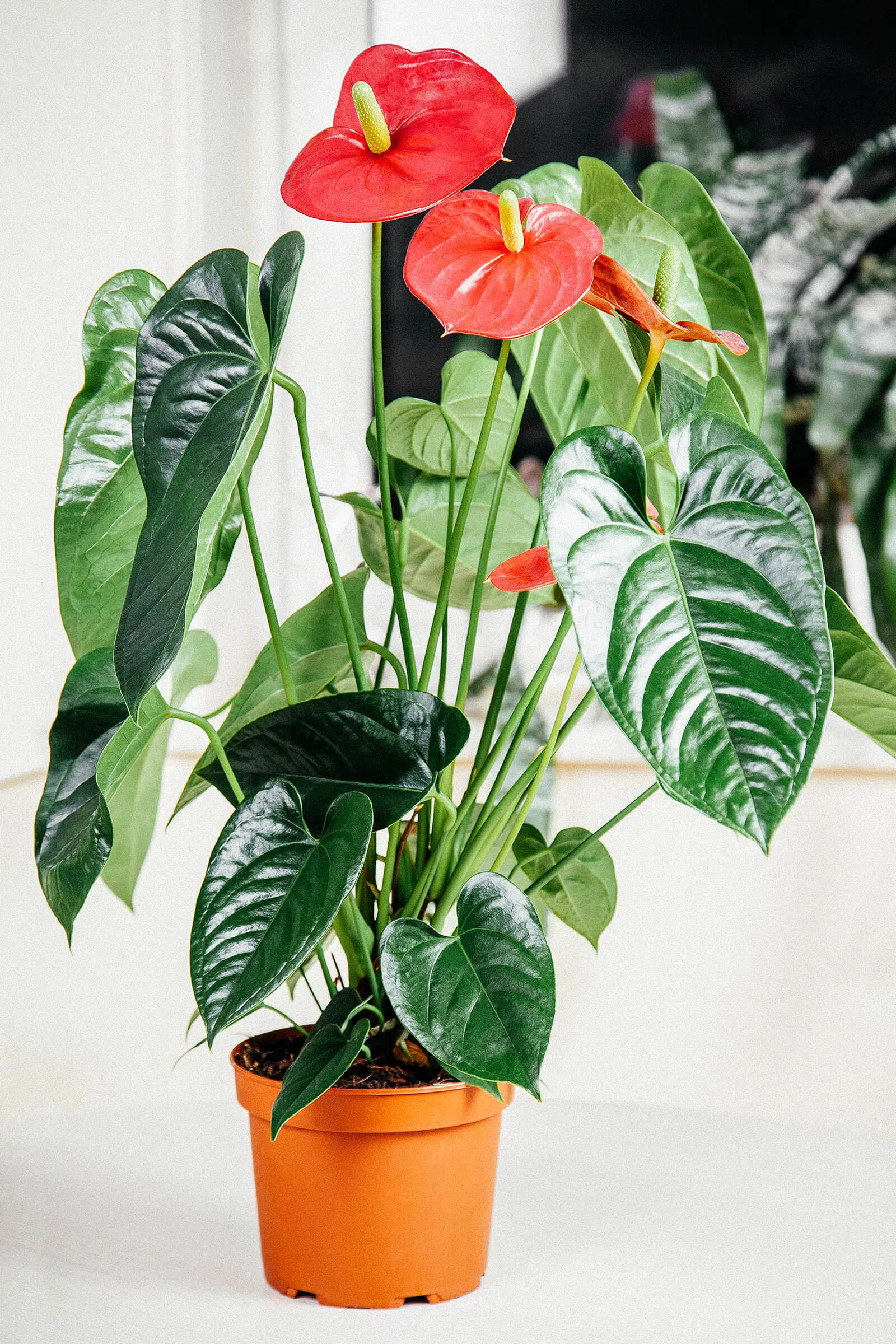 Source: Garden Betty
Source: Garden Betty
How To Grow:
- Flamingo Flower care requires medium to bright indirect light.
- Prefer medium moisture but dries out after watering. Be sure that your roots are watered completely
- Fertilize it once a month with about 25% amount for optimum growth
How To Care:
- When you check the leaves, if yellow, they may be waterlogged and root rot may happen. Plus, if brown and crunchy, it may be not watered sufficiently
- Groom this houseplant regularly by taking off any discolored or dying leaves.
#10. Holiday Cactus
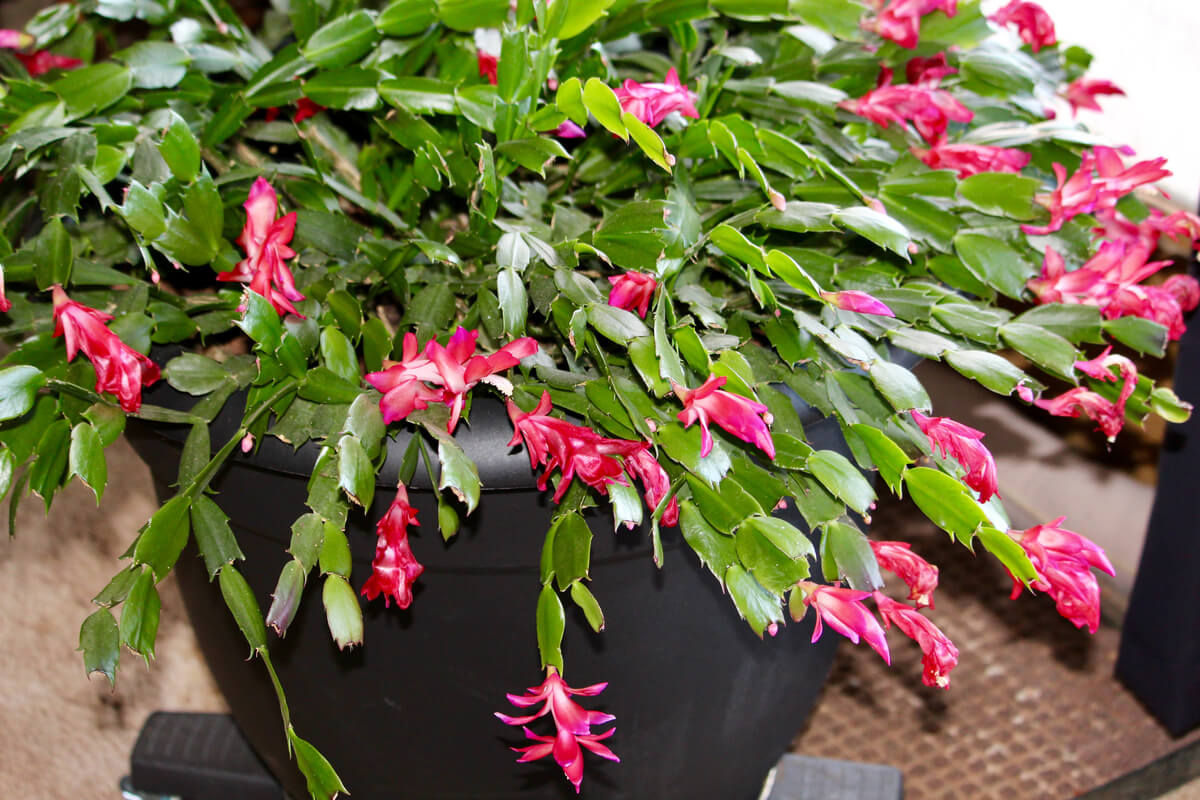 Source: Rural Sprout
Source: Rural Sprout
How To Grow:
- Choose a pot having a drainage hole to keep the soil from getting too wet
- Prefer soak up the high humidity, dappled sunlight, and warm temperatures
- Happy with a more humid environment, so a bathroom or kitchen would be ideal
How To Care:
- Only water when the top one-third of the soil is dry. When the soil is dry enough, soak the soil until the water runs through the pot’s drainage holes.
- Feed the plant from spring through early fall every 2 weeks with a suitable amount
- Prune plants in late spring to encourage branching and producing flowers
#11. Poinsettia
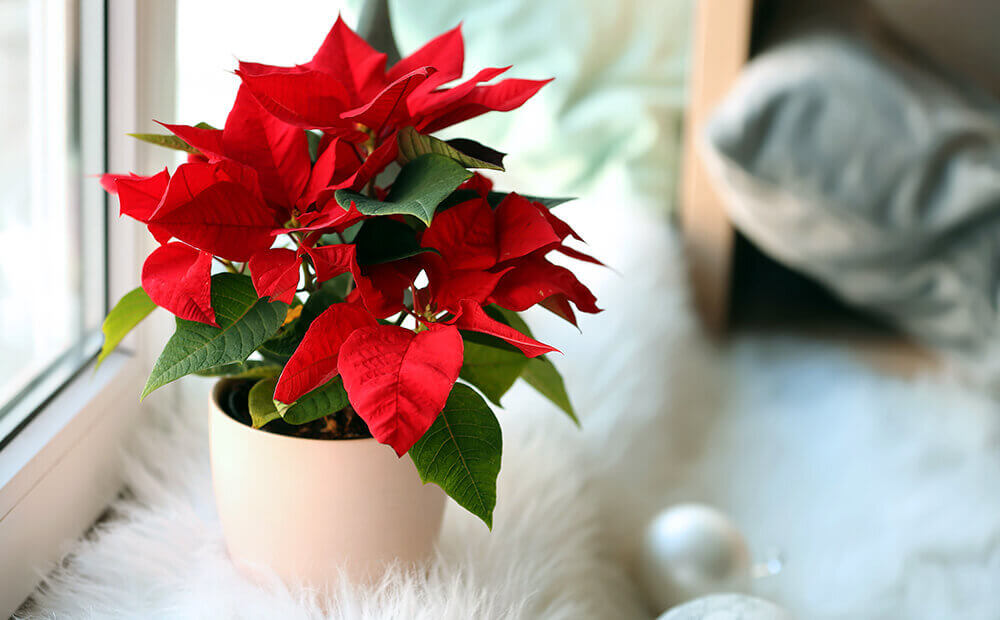 Source: Dammann’s Garden Company
Source: Dammann’s Garden Company
How To Grow:
- Put them in a south, east or west-facing window where they receive bright indirect light
- Avoid placing them near cold drafts, heat ducts, fireplaces, fans, heaters
- Keeping them at 65- 70 degrees F is perfect. Freezing temperatures can cause death to poinsettias
How To Care:
- Keep the soil moist but not constant. Never let them dry that they wilt
- Start feeding them when you see new growth like new green leaves and stems every 3-4 weeks
- Transplant them into a larger container in late spring or early summer
- Use a soil mix with a good amount of organic matter such as peat moss
#12. African Violets
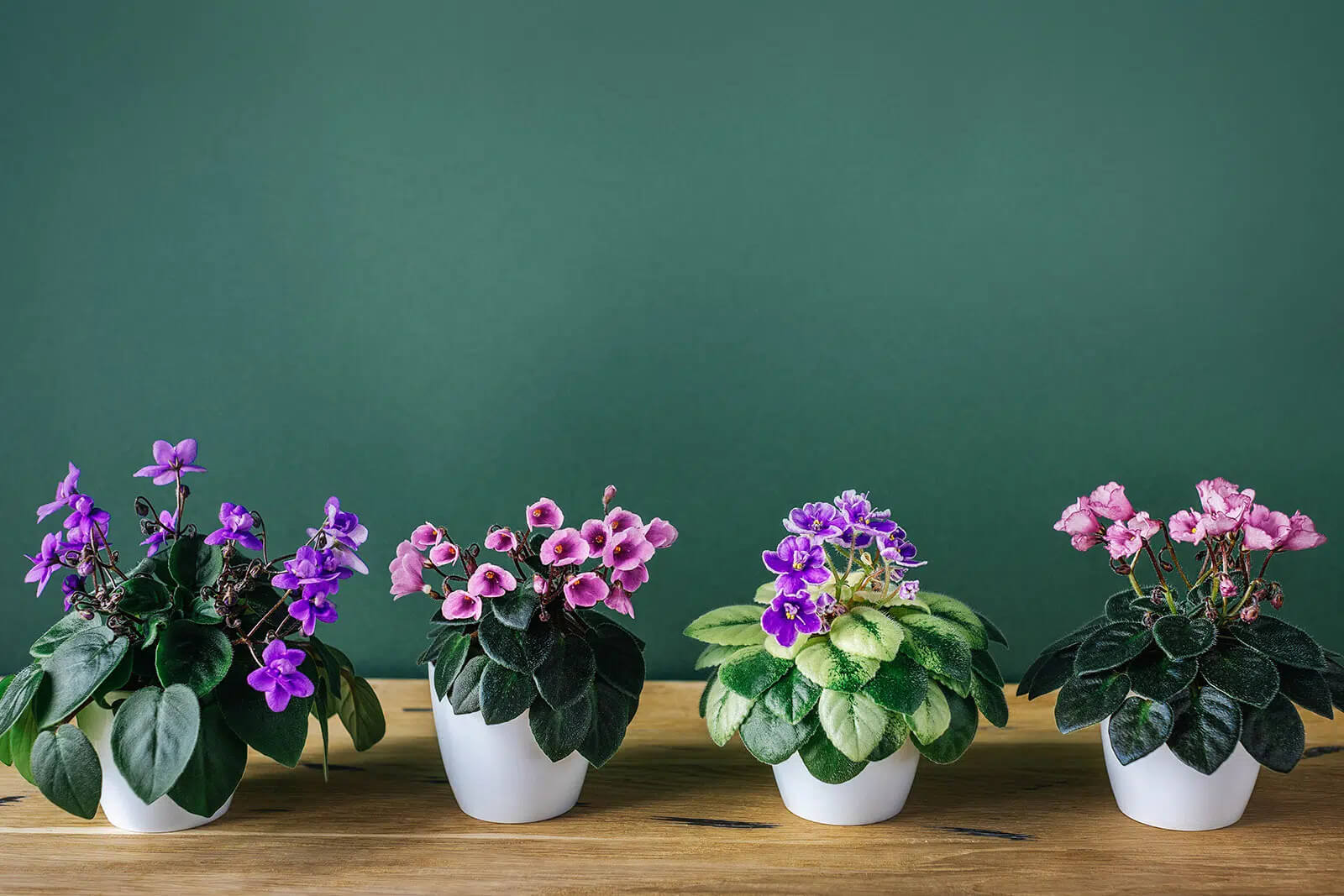 Source: Garden Betty
Source: Garden Betty
How To Grow:
- Bright indirect sunlight is ideal for growing African violets
- Your plant is receiving too much light if the leaves begin to turn light green, but thin, dark-green leaves or a leggy plant suggest insufficient lighting
- African violets require a potting mix that drains properly. Root rot, which causes the plant to get wet, can be caused by poor drainage
- Aim for high humidity and keep the soil wet with warm water
How To Care:
- Avoid letting water touch the leaves as it may cause brown stains
- Remove any dead foliage or blossoms as soon as you notice them to promote a stronger plant
- Check the soil frequently for excess moisture
#13. Eternal Flame Plant
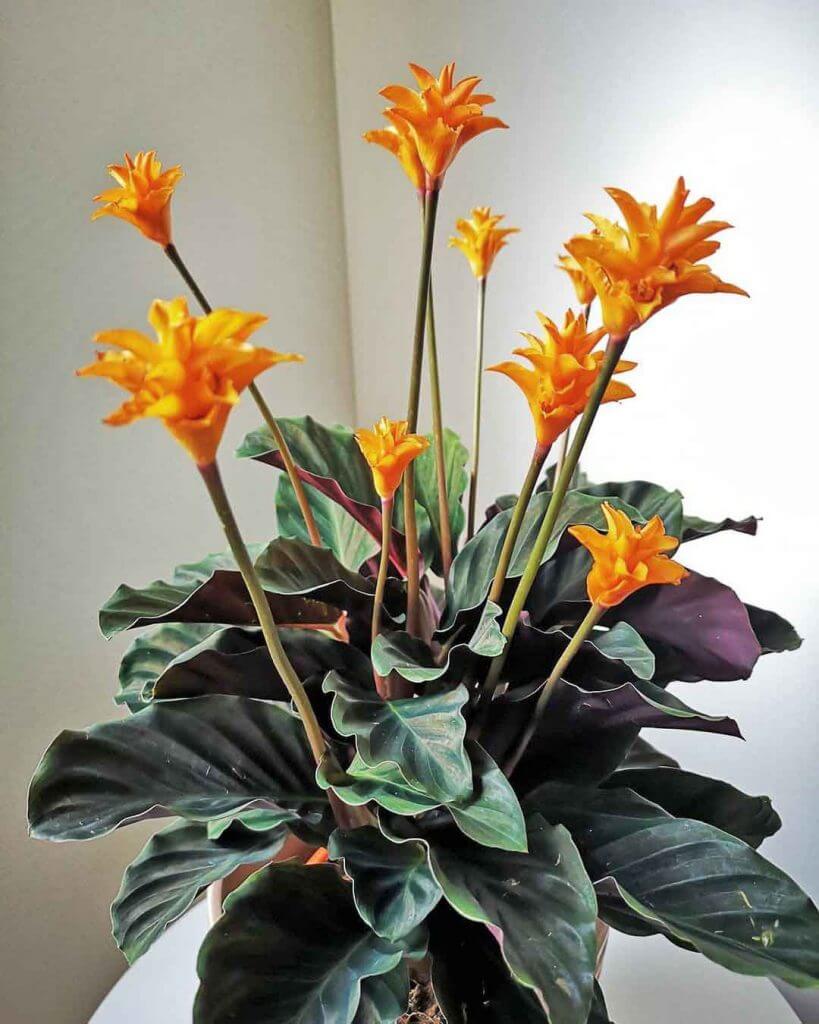 Source: Plant Care
Source: Plant Care
How To Grow:
- This species loves heat and humidity but dislikes direct sunlight
- The temperature in the room must be stable. Remember to allow the water to drain easily
- Eternal flame likes to have an even amount of water
- Soil-based potting compost with some peat moss is the best idea
How To Care:
- Use standard fertilizer every 2 weeks, especially during the growing period
- The best time for re-potting is in late June
- Prune them at the base, where the leaf meets the stalk
#14. Lipstick Plant
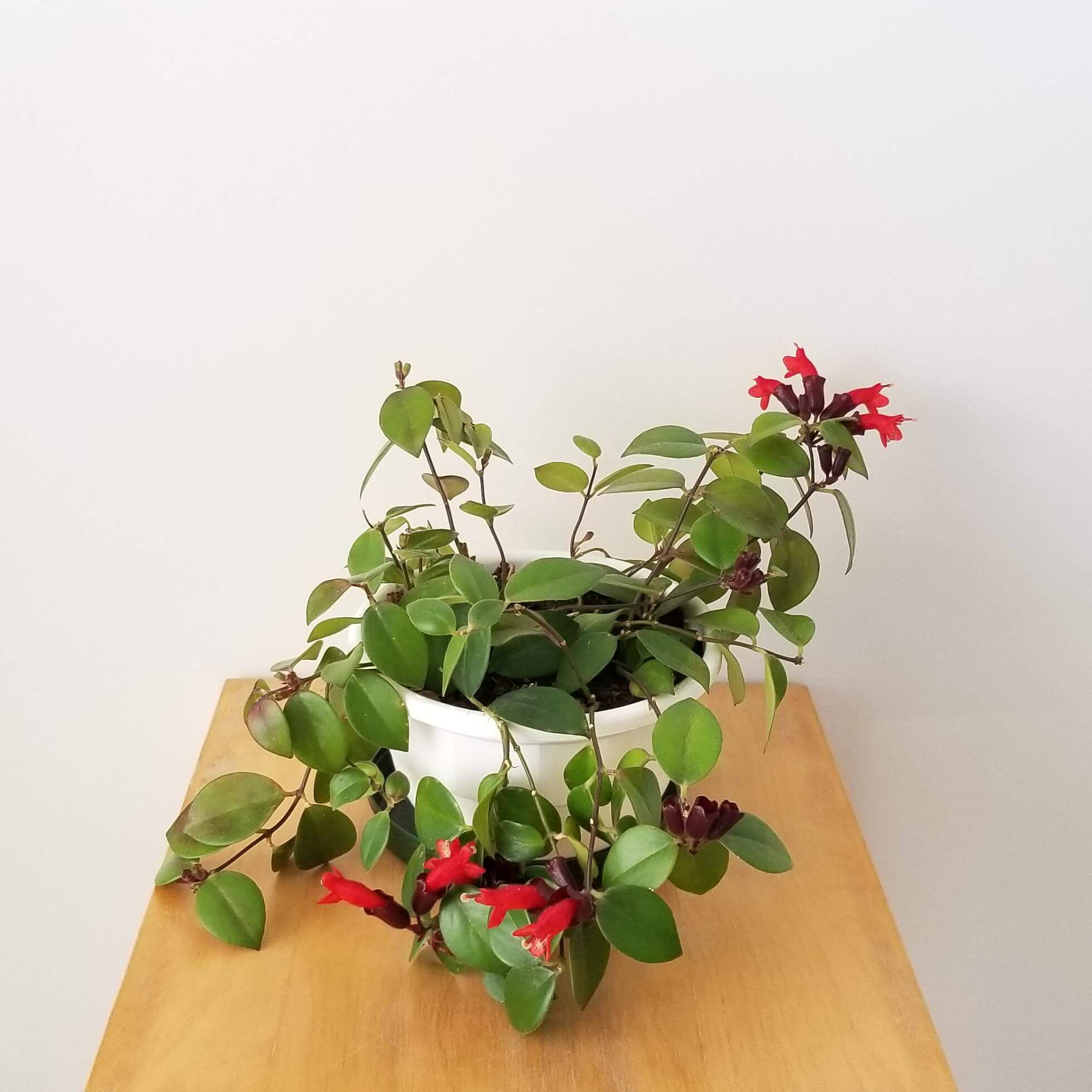 Source: InteriorPlants.ca
Source: InteriorPlants.ca
How To Grow:
- A pot with drainage holes is the best option
- Water the plant moderately
- Put the plant in the bright indirect light offset by a little shade
How To Care:
- Expose them to bright light if your flower buds aren’t blooming very well
- Avoid overwatering. Too much water can lead to root rot or fungal problems
- Give them humidity, so keep the temperature around 75-85 degrees F and mist them regularly
- Fertilize occasionally, about once every season can help them thrive during the growing season
#15. Begonias
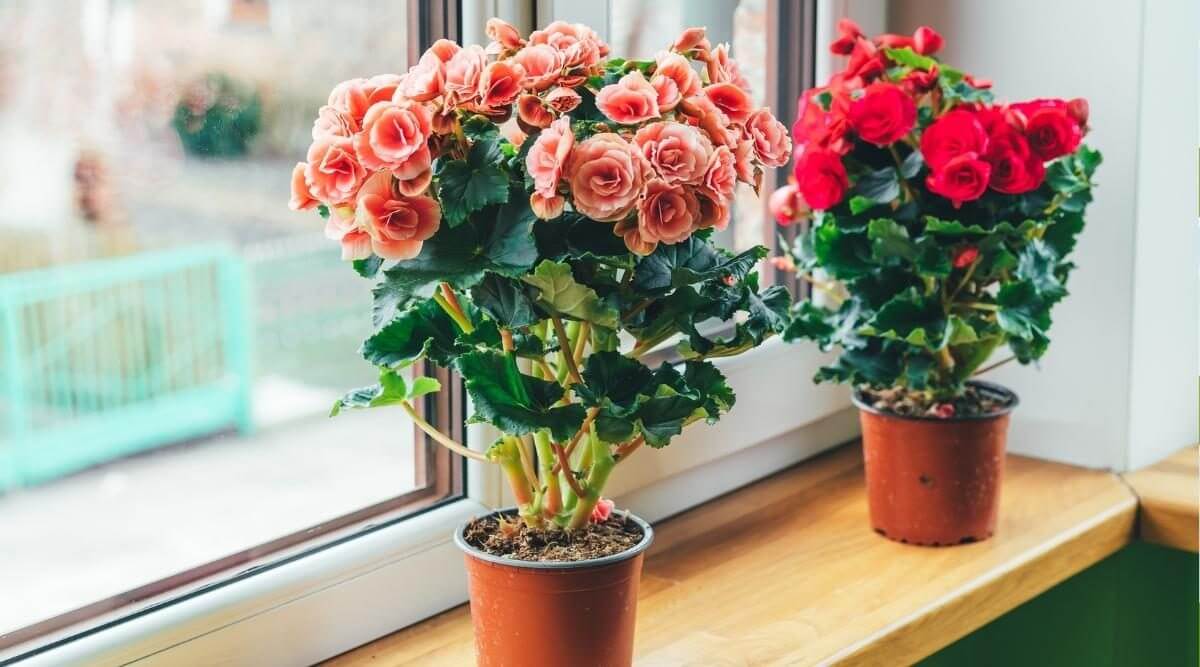 Source: All About Gardening
Source: All About Gardening
How To Grow:
- Plant both annual and perennial begonia types in partial shade, with moist, well-drained soil high in organic content.
- They need bright light to flower, but too much direct sunlight may scorch the leaves.
- Ideally, choose a site with morning sun and afternoon shade or dappled sunlight beneath an open tree canopy.
- Water it enough to keep the soil from drying out
How To Care:
- Apply a slow-release fertilizer or a granular organic fertilizer during the growing season in late spring
- They love consistent moist and high-quality soil.
- Avoid wetting the leaves
- Only water when it begins to dry out. Excessive water can lead to diseases. Therefore, check the plant’s condition regularly
